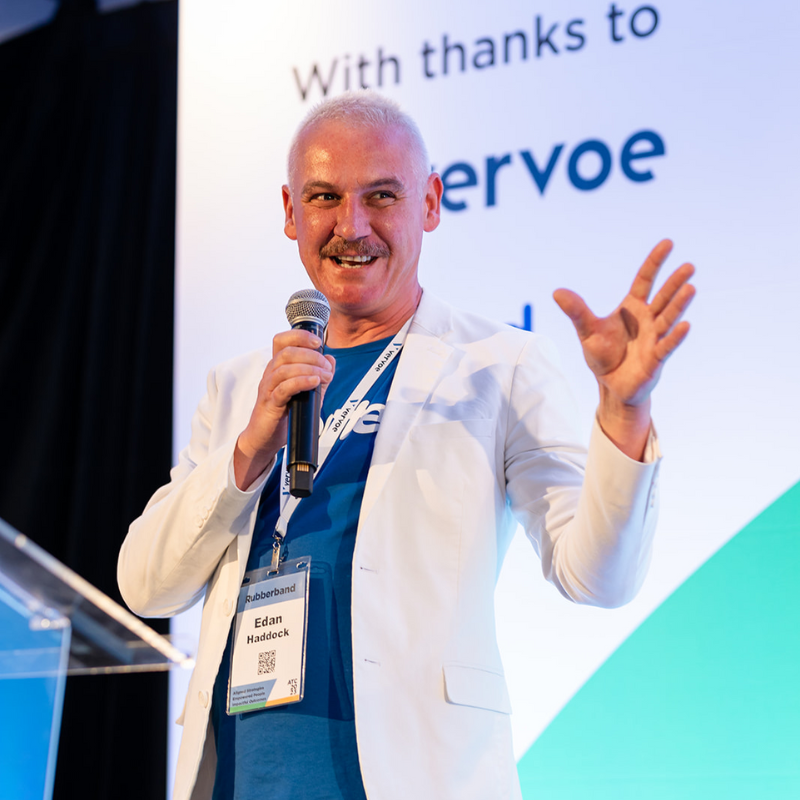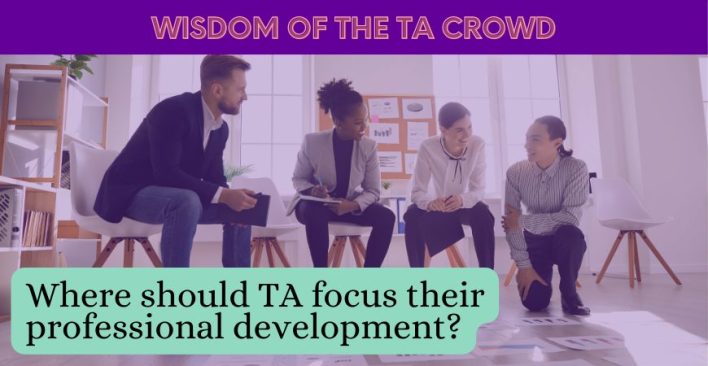Unlocking Creativity and Problem-Solving: The Power of Design Thinking in Talent Acquisition

Have you ever felt like the processes that you have in place in your Talent Strategy don’t meet the needs of the end user?
We’ve all been guilty of it. Sometimes we do things a certain way because “that’s how it’s always been done.” But that doesn’t mean the way we’re doing things serves the needs of the people we are working with, for example our candidates, our hiring managers, or other stakeholders involved in the recruitment process.
Enter Design Centred Thinking (DCT), a problem-solving strategy that provides a human-centered and iterative approach to tackling complex challenges.
What is Design Centred Thinking?
Design thinking is a problem-solving methodology that draws inspiration from the practices of designers. It emphasizes empathy, collaboration, experimentation, and iterative learning. Unlike traditional linear problem-solving approaches, design thinking encourages a non-linear, iterative process that focuses on understanding the user’s needs and experiences.
View this post on Instagram
DCT is about understanding people’s needs, exploring creative possibilities, and iterating on ideas based on feedback. This approach puts the end-user at the centre of the problem-solving process, and aims to deliver human-centred solutions.
How can recruiters and TA professionals use Design Centered thinking?
Many organisations, large and small, use design centred thinking in their product development to stay innovative and at the top of their market. Think IBM, AirBnB, and Atlassian (just to name a few). But while DCT is primarily used in the digital product space, there are boundless applications of how Talent Teams could apply this methodology to solving the challenges they face.

“Talent Acquisition professionals that can apply this approach to recruitment are essentially focusing on the needs and experiences of candidates, and designing recruitment processes and experiences that are tailored to these,” says Pavi Iyer, Head of People & Talent @ Mindset Health.
“This skillset is highly underrated within the TA industry and has so many more applications outside of just design. They can be utilised to strengthen your brand, redefine storytelling techniques, ideate new attraction methods, help to create personas, and tailor adverts to engage candidates that are more aligned with your organisation – in turn amplifying your messaging and strengthening employee retention.”

Edan Haddock, Chief Bander at Rubberband, and Head of Talent Attraction at REA Group is also a big believer in the power of creativity in problem solving.
“When I was working in a previous role we used Design Thinking because we wanted to design solutions in the same way our CX/ Tech teams did,” says Edan.
“Why would we use a different methodology for candidate experience than what was used for our customer experience initiatives?”
“I love the double-diamond method- and often in HR we skip over the Research stage. Highly recommend teams look at the course through RMIT online. I loved it!”
How to run a Design Centred Thinking Project for TA
If you’re keen to try out DCT in your own team, here’s a play-by-play breakdown of what steps to take. We’ve illustrated how this might work out in real time using an example of improving Candidate Experience.
What do you do? |
Why do you do it? |
How do you do it?
|
| 1. Empathise | The first step in DCT is to empathise with the people you’re designing for; you want to understand needs, motivations, challenges, and aspirations. You can gather insights through techniques such as interviews, surveys, observations, and journey mapping. | Let’s start by empathising with candidates during their hiring journey to understand their needs, frustrations, and preferences. You could identify their pain points by:
In this example, we discover that candidates find the application process cumbersome, lack transparency about the company culture, and desire better communication throughout the hiring journey. |
| 2. Define | Once you have undertaken the empathise step and understand what the problem is, it’s time to define the problem. Think of the elevator pitch, but even more succinct; you want to be able to articulate what the challenge is in a sentence or two. | Based on the research undertaken in step one, we can define the problem the organisation is having with Candidate Experience:
“Candidates find the application process impersonal and lacking transparency, leading to a poor candidate experience and difficulty in attracting top talent.” |
| 3. Ideate | This is the time to let your creativity shine! With a clear understanding of the problem, undertake a brainstorming session. Don’t dismiss any “bad ideas” – this is the time to lay everything out on the table and explore all the options.
Use techniques such as:
|
Sit down with colleagues in the Talent, HR, Employer Brand teams, hiring managers and other key stakeholders to brainstorm. Ideas to this problem might include:
|
| 4. Prototype | The purpose of prototyping is to quickly test and iterate on your ideas to see what works and what doesn’t. Once you’ve laid out 2-3 ideas about how to solve the problem, create prototypes of your solutions. Prototypes can range from basic sketches or wireframes to more conceptualised mockups or even functional prototypes, depending on the complexity of the solution. | Create prototypes of the ideas:
|
| 5. Test | Once you have prototypes, test them with actual stakeholders. Gather feedback on usability, desirability, and effectiveness. This feedback will help you refine your solutions further and identify any remaining issues or opportunities for improvement. | Test the prototypes with a diverse group of candidates, including both active and passive job seekers. Gather feedback on the usability, effectiveness, and overall experience of each solution. To measure the effectiveness of these solutions, use surveys, interviews, and usability testing sessions to collect qualitative and quantitative data. |
| 6. Iterate | Based on the feedback from testing, iterate on your designs. Make necessary adjustments, improvements, or even pivot to different solutions if needed. Iteration is an essential part of DCT; it allows you to continually refine and enhance your designs based on real-world feedback. | Based on the feedback received during testing, iterate on the prototypes:
Continue to test each iteration, making adjustments as needed to ensure they meet candidate needs and preferences. |
| 7. Implement | Finally, once you’ve iterated and refined your designs, it’s time to implement them. Roll out your solutions and monitor their effectiveness over time. Be prepared to make further adjustments based on ongoing feedback and evolving needs. | Having iterated and refined the solutions, implement them into the Talent Acquisition strategy:
Continue to monitor candidate feedback and metrics such as application completion rates and time-to-hire to evaluate the effectiveness of the new approach. |
This is just one example of how you could use DCT to approach and solve a number of challenges you are facing with your TA strategy.
And remember, DCT is not a linear process—it’s iterative and cyclical. The point is to continually improve and innovate, so make sure to keep on checking back in on how the solution is working out and repeat any of the steps as necessary.
Want to know more?
Here are some great articles that delve deeper into how recruiters can use Design Centred Thinking:
- How to Use Design Thinking to Solve Recruiting Problems, by Cielo
- How To Apply Design Thinking in HR & TA (+ 3 Case Studies), by AIHR
- Designing Recruiters: How Design Thinking Can Change Recruitment, by Cogs Agency
- Is taking a human-centred design approach to recruiting the key to attracting graduates in a candidate market?, by Leigh Parker, PwC
Have you applied Design Centred Thinking to your TA Strategy? We want to hear about it! Get in touch.
Feature Image: Canva
Related articles
Leave a Reply
Sign up to our newsletter
Get a weekly digest on the latest in Talent Acquisition.
Deliver this goodness to my inbox!


